 Project 615 – NATO “Quebec”
Project 615 – NATO “Quebec”30 submarines (1950-54)
Soviet Cold War Subs
Pr.613 Whiskey | Pr.611 Zulu | Pr.615 Quebec | Pr.633 Romeo | Pr.651 Juliet | Pr.641 Foxtrot | Pr.641 buki Tango | Pr.877 KiloPr.627 kit November | Pr.659 Echo I | Pr.675 Echo II | Pr.671 Victor I | Pr.671RT Victor II | Pr.671RTMK Victor III | Pr.670/670M skat Charlie | Pr.705 lira Alfa | Pr.949 antey Oscar | Pr.945 Sierra | Pr.971 bars Akula | Pr.885 graney Yasen | Pr. 545 Laika
Pr.629 Golf | Pr.658 Hotel | Pr.667A Yankee | Pr.667B Murena Delta I | Pr.667D Delta II | Pr.667BDR Kalmar Delta III | Pr.667 BDMR delfin Delta IV | Pr. 941 akula Typhoon | Pr.995 borei Dolgorukiy | Pr.09851 Khabarovsk
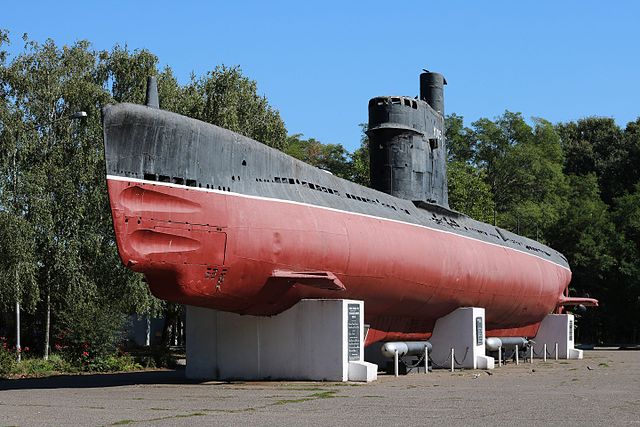
Preserved M-296
These thirty conventional attack submarines called internally project 615, were the smallest Soviet models ever deployed during the cold war. They proceeded from the idea of a cheap, mass-produced coastal submarine to ensure close defense of Soviet harbours and trade lines. They were also the first users of the closed loop Kreislauf system, recovered from the archives of the Third Reich and manufactured with the help and expertise of German engineers fetch in 1945-46, the Soviet equivalent or Operation paperclip. Although this propulsion system had its advantage, it limited the submarines to coastal operations only, while the field of nuclear propulsion appeared much more appealing. As a result, the serie was cut short after the 30th submarine and USSR would never return to this type of coastal submarine. This class would nevertheless remain in service until the 1980s, despite many serious accidents, explosions and fires as the adopted system was far from reliable. This system pioneered by German engineers during WW2, and perfected, was a desperate measure at a time the regime was ready to accept even the most outlandish propositions as trump cards.

Author’s 3D Rendition of the svg “flat” of the Quebec, illustration by Mike1979 Russia (CC)
Project 615 Development history
In 1938, OKB-196 (also called the “Slezin Bureau” according to commanding NKVD officer, Slezin) began to create a project for a small experimental submarine powered by the ED-KhPI system, using a close sloop system using liquid oxygen. Soviet intelligence knew the Germans were working on it, as the Kreislauf system. This unit was particular as its workforce was made of imprisoned engineers, which worked on the creation of new military equipment in the field of submarine.
The development of the project raised much attention as it concerned a promising propulsion solution, and its early phase consisted in eliminating shortcomings found during the construction and testing of the REDO powerplant used on the R-1 boat. Issue works on were notably ensuring gas tightness in the diesel compartments, and improving submerged habitability. These issues were all fixed and at the beginning of 1939, the OKB-196 project was approved. On June 16, 1939, the Defense Committee of the Council of People’s Commissars of the USSR voted the construction of an experimental submarine, with a single engine using this system. The resolution led on November 16, 1939, a first prototype named M-401 (C.135) to be laid down at plant No. 196. This project had critics however, notably according A.K. Nazarov, M.P Frinovskiy, the head of People’s Commissariat of the Navy, was very skeptical about it. However the invasion in 1941 stopped all developments on the project which went silent until 1945.
Project 615 was developed from 1945 as a development of the Malyutka class submarines. It was triggered by a resolution of the Council of Ministers of the USSR for the further development of submarines using a single cycle engine issued in July 1946. TsKB-18 started work on a new prototype submarine using the 1938 ED-KhPI system of single engine with a chemical lime absorber under direction of chief designer A.S. Kassatsier, assisted by A.K. Nazarov and S.E. Lipelis. The propulsion system was not capable of producing a large output, so it was found more suitable for a small submarine. The type was described as fit only to protect ports, naval bases and bases of the USSR, patrolling their approaches but also attack trade lines in international waters close to their bases in wartime. Like the Malyutka class, these were to be small enough to be cut in modular sections, and transferred to other theaters of military operations by rail. According this, transportation by rail imposed minimal dismantling of the hull, separated in self-contained modules.

Mike1979 Russia’s profile of the Quebec class (cc)
Design
Initial studies and project
Apart their very small dimensions, the distinctive feature of this class was of course the unified air-independent engines used for underwater navigation, whereas a 32D diesel with a capacity of 900 hp was the surface main engine. At tome point it was suggested for forced speed modes to use two diesel engines M50P of 700 liters capacity each, but with a much smaller underwater resource. For diving on diesel engines, the lead boat had two tanks with liquid oxygen weighting 8.5 tons each, plus a 14.4 tons tank with lime-type chemical absorber. The middle shaft had a PG-106 electric motor with a 100 liters capacity.
About the Kreislauf system:
The latter was based on the use of pressurized liquid oxygen, decomposed and stored on board. This process allowed for very long underwater dives and better speeds, but above all, they had the merit of more stabily than the earlier Walter system. The ED-KhPI system operated in a closed cycle, using oxygen to oxidize fuel, and solid chemical absorber to remove carbon dioxide.
This gave rise to a single experimental submarine, S-99. (called “Whale” by NATO). It made many dives in 1949-50 but exploded and sank during a test. Designed TsKB18 under the patronage of Kassatier, their adaptation for Project 615 was risky, but overall these units gave relatively good satisfaction, although both their speed and above all, their autonomy was limited and indeed obliged them to coastal operations only. The project had many critics at the time, notably preventing to allocate more resourced in the more promising nuclear propulsion. Project 615 boats entered service at a time when they were already out of date and production was limited to the first batch of 30 boats, and the idea of using the Kreislauf system went no further.
The designers gave this small submarine one and a half hull. The sturdy hull was divided by transverse bulkheads, creating seven independent, modular compartments in order to be carried by rail when dismonunted. The transverse bulkheads binding the third compartment, central post, had to withstand a pressure of 10 kg of force/square cm. and the rest were calculated to endure 1 kgf/sq.cm only.
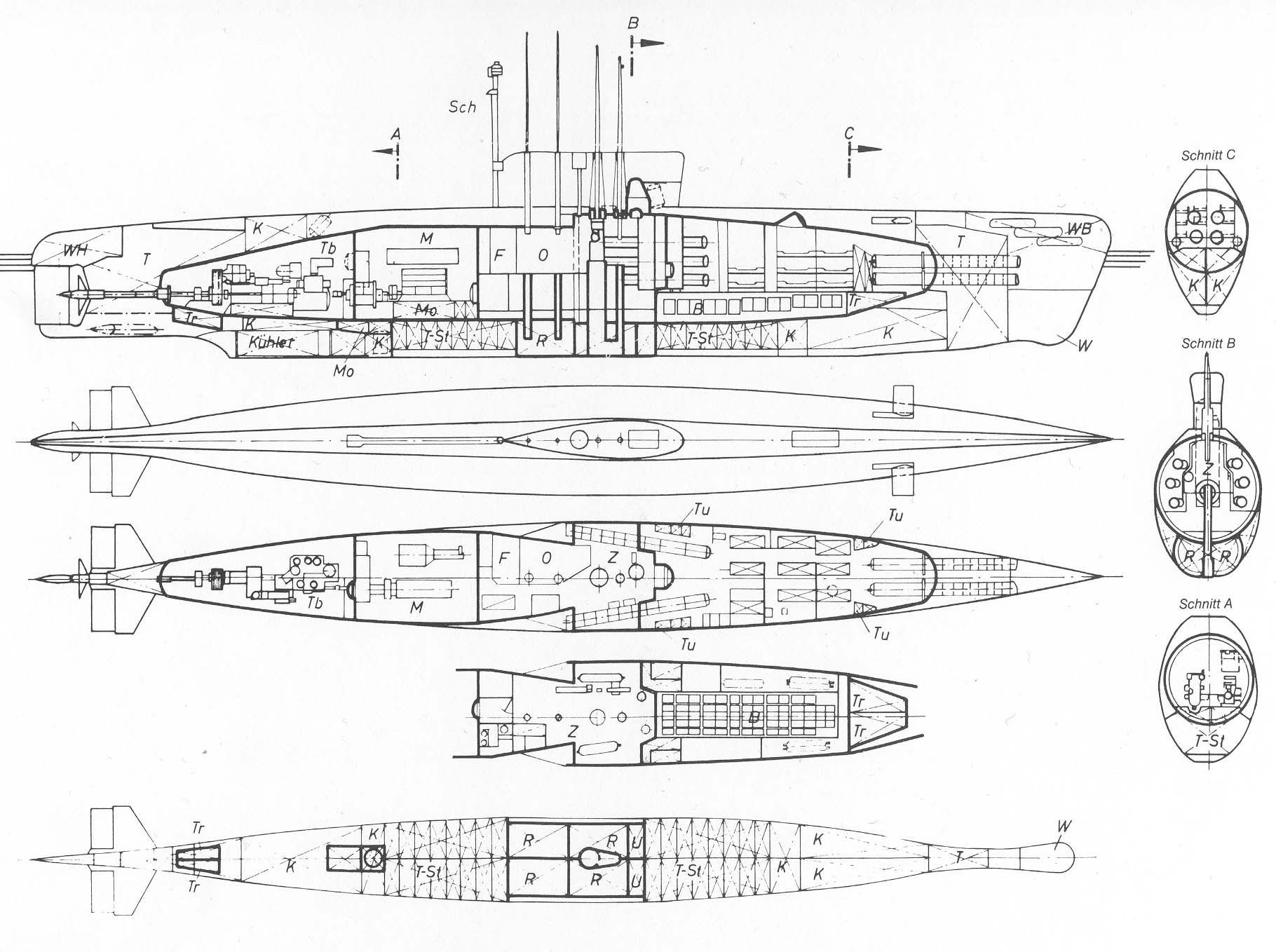
The project “whale”
Construction
In 1949, at the Sudomekh plant, a life-size wooden model was built to check the location of equipment in each module. In March 1950, the experimental boat (M-254) was laid down. In August 1950, she was launched and her fixed trials started in September. In July 1951 she had performed all her factory tests. A year later it was possible to start sea trials for official Navy tests. After these successful tests for the lead ship, mass production was approved for the A615 modification, differing only in the installation of one tank for liquid oxygen instead of two, while maintaining the same capacity.
The construction of the entire series was headed by E.P. Korsak. It was a fast process, as between the completion and start of mooring trials in 1954-1955 it had been reduced to 1-2 months on average. Duration of these tests was at the start 5.5 months. Factory and State tests were carried out in the Tallinn base. Construction was performed at the A. Marty plant, experiencing great difficulties: The shipyard indeed had not built a submarine for fifteen years. But in contrast to the modular method of construction applied on the lead boat from Sudomekh yard, production boats were built as a single unit. This method proved more effective as the slipway construction time was reduced to just 120 days, total construction cycle reduced by 20-25%, as well as costs and labor time. Overall this made for a far cheaper submarines (including the material used, as it was a smaller boat) and cost decreased massively. The “Sudomekh” boat was launched by using two floating cranes, while production boats at A. Marty plant just rolled on trolleys directly into the floating dock, later flooded. This was a simpler and faster process too.
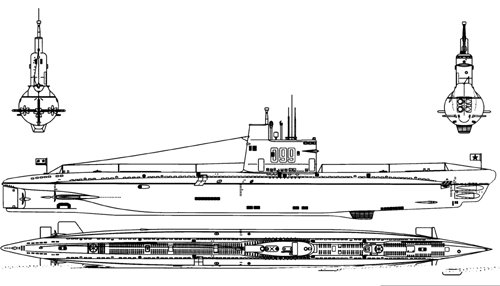
In total, from 1953 to 1959, in addition to the lead boat “Sudomekh” (Project 615) 29 boats of the production Project A615 were launched and completed. 23 of them came from the Sudomekh Shipyard, six from the Admiraly Shipyard, previously known until December 1957 as the A. Marty Shipyard.
Surviving boats:
Until now, three submarines of the A615 project survived as exhibits – M-261 is on display today in Krasnodar, and M-296 in Odessa (exhibited under the designation M-305). M-361, completed as a research and test boat (project 637) continues to be listed in service, used for this intended purpose as a fixed training boat for the Naval Engineering Institute, Pushkin.
Specifications
Displacement: 460-540 tons Surface/dive
Dimensions: 56 x 5,1 x 3,8 m
Propulsion: 3 shafts diesel engines, 1 electric motor xxx hp 19/19 knots Surface/dive
Crew: 30
Range: 2750 nmi (5090 km) at cruise speed, surfaced
Armament: 4 x 533 mm (21 inches) prow, 2 x 25 mm AA (early).
Electronics: Radar Snoop Plate, Sonar Tamir, antenne passive Feniks.
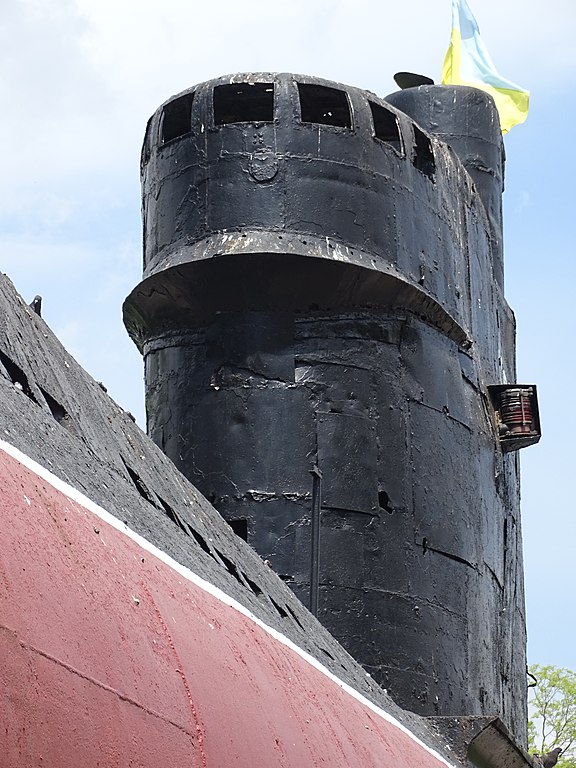
The conning tower of a Quebec class boat at the Battery 411 memorial, Odessa
Read more
https://www.cdb-lazurit.ru/history.html
http://www.navy.su/navysub1945/a615/index.htm
http://book.uraic.ru/elib/pl/lodki/615.htm
http://www.deepstorm.ru/DeepStorm.files/45-92/dts/A615/list.htm
http://www.deepstorm.ru/DeepStorm.files/45-92/dts/615/list.htm
http://www.deepstorm.ru/DeepStorm.files/45-92/dss/637/list.htm
https://www.globalsecurity.org/military/world/russia/615.htm
https://www.kchf.ru/ship/podlodki/m261.htm
http://scalemodels.ru/modules/photo/viewcat_cid_152.html
http://www.deepstorm.ru/DeepStorm.files/45-92/dts/A615/M-296/M-296.htm
http://hermitlair.ucoz.com/blog/2015-03-24-627
Типы подводных лодок ВМФ СССР и России
Почтовый (подводная лодка) — дореволюционная подводная лодка с единым двигателем (гл. конструктор И. Г. Бубнов)
C.92 (РЕДО) — программа по разработке регенеративного единого двигателя (гл. конструктор С. А. Базилевский)
М-92 (ЕД-ВВД) — программа по разработке единого двигателя с удалением отработанных газов в воду (гл. конструктор Б. Д. Злотопольский)
М-401 (ЕД-ХПИ) — программа по разработке единого двигателя с химическим поглотителем (гл. конструктор В. С. Дмитриевский)
deepstorm.ru // Проект 637
Производство Адмиралтейского завода.
М-361 достроена как лодка-лаборатория по проекту 637.
Логотип Викисклада На Викискладе есть медиафайлы по теме Подводные лодки проекта 615
Проект А615 на deepstorm.ru
Подводная лодка «М-261» на сайте Черноморского флота
36 фотографий М-305, установленной на мемориале 411 береговой батареи г. Одесса
историческая справка о МС-296, являющейся ныне музейным экспонатом «Малютка М-305» на мемориале 411 береговой батареи г. Одесса.
Фотографии УТК М-361 в ВВИИ, Пушкин.
Service records of the Type 615
The A615 boats were notorious among Soviet submariners because of their high risk of fire hazard. So much so they were called “lighters”. Here are the major incidents:
-August 12, 1956: M-259, under the command of Captain 3rd Rank E.V. Butuzov, was training in the western part of the Gulf of Finland; Suddenly there was a decrease in the proportion of oxygen in the gas mixture, followed by a massive explosion in the enclosure of the diesel engine. The explosion killed three crew members and their mechanical engineer, senior lieutenant engineer Nikolai Pervukhin which suffocated in the smoke. Six more ratings were seriously injured and burned. The wounded were evacuated by destroyers while the submarine was towed to Kronstadt by an ASW corvette. The state commission investigating the accident did not find any flaws in the design and considered the cause of the incident linked to human error and crew management. Captain E.V. Butuzov was demoted of his post as a result.
-September 26, 1957: M-256 was passing speed tests on the measured mile of the Tallinn test site, near Vimsi Peninsula in the Gulf of Finland. It also experienced a rapid drop of the proportion of oxygen in the gas mixture. It was again, followed by a violent explosion next to the diesel engine and the fire, fueled by oxygen from the tank, spread to the fourth, fifth and sixth compartments. Bulkhead doors were blocked by debris and bodies of the dead. Captain 3rd Rank Yu. S. Vavakin ordered the crew of the remaining compartments to go to the upper deck and exit the boat, which was surfaced fortunately. The rescue ship arrived at the scene launched a towing rope on the propeller, while fearing an explosion, it moved away from the boat in distress for a considerable distance. Due to the lack of fire extinguishing systems, the fire raged on until seals of the outboard openings burned out, provoking a massive flood into the hull. In the end, M256 lost its longitudinal stability and sank by the stern. Only seven crew members escaped, rescued by the destroyed, the only ones with life jackets. After this accident, the project A615 project were forbidden to sail when diesel engines were operating in a closed cycle, until the enquiry concluded anything.
Investigation also watched after the construction plants, and oxygen system. It was concluded it needed a more thorough check for quality problems in all boats while it was also modernized, and an automatic equipment installed, measuring the composition of oxygen and carbon dioxide. Also a foam extinguishing system was installed in the engine compartment as well as other safety systems. The commissioned established the use of liquid oxygen as a fuel oxidizer was the main reason of these accidents, by its inherent instability, leading to operational and technical difficulties. Soon, on the basis of the A615 project, the modernized Project 637 was developed, replacing liquid oxygen by the B-2 product, sodium superoxide instead. It was stored in the form of granules and reacted onlu under the influence of sea water, generating oxygen. It was also coupled with the same carbon dioxide absorber. In 1958-1959, the last boat of the A615 project, M-361, was re-equipped to test the Project 637 new powerplant. Tests were carried out at the Admiralty plant, followed by commissioning tests, but in May 1960, they were abruptly interrupted. The Main Directorate of Naval Shipbuilding indeed ordered to stop working on the project, as the general staff preferred now to concentrate on nuclear power. The 4th compartment’s powerplant was dismantled and the unique Project 637 boat was transferred to Leningrad VVMU im. Lenin for training and educational purposes.
But this was not the last incident: The M-351 also sank in the Black Sea Fleet, but without loss of personnel. Everyone was able to escape the surfaced boat and the fire stayed “measured”.
For the anecdote, the Quebec class also took part in a river parade, submerged and surfaced. Only a small boat could perform this. in 1960, M-301 submarine was taking part in Navy Day celebrations in Leningrad and was scheuled to pass underwater along the Neva, making an ascent in front of the cruiser Aurora. However the turbulence of the water flow constantly blows her bow, so there was a high risk of collision with the okd cruiser. The crew under command of Rostislav Agapov successfully coped with the task but never again the passage of a submerged submarine along the river under bridges was carried out again.
The design in the late 1960s, was put into question as the importance of the noise reduction underwater increased, notably compared to western standard. In the early 70s the very noisy Project A615s were no longer relevant under the new standard, and gradually withdrawn from the Soviet Navy service.
Gallery
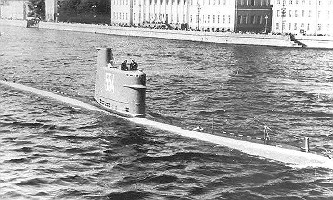 Quebec had the enormous disadvantage of not having to move far away from a port in order to get supplies of liquid oxygen. Moreover, their reliable dimensions made them semi-coastal units.
Quebec had the enormous disadvantage of not having to move far away from a port in order to get supplies of liquid oxygen. Moreover, their reliable dimensions made them semi-coastal units.
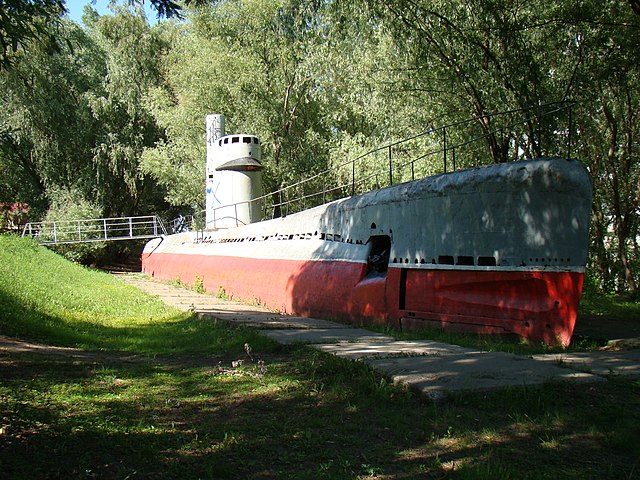

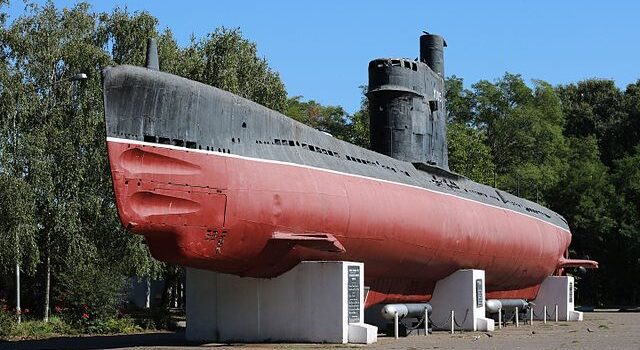

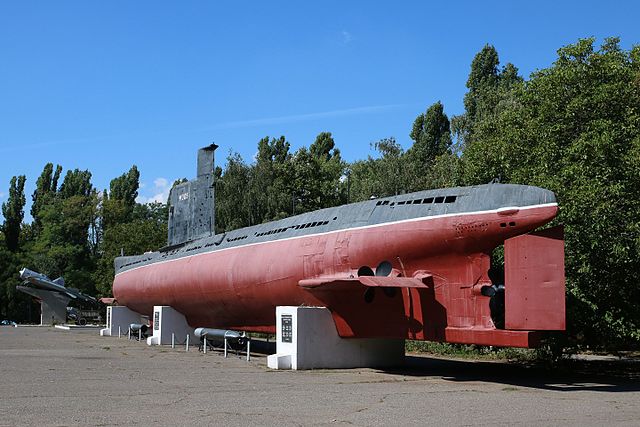

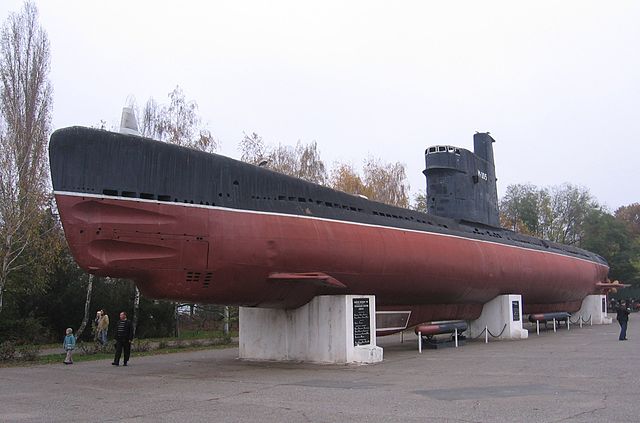
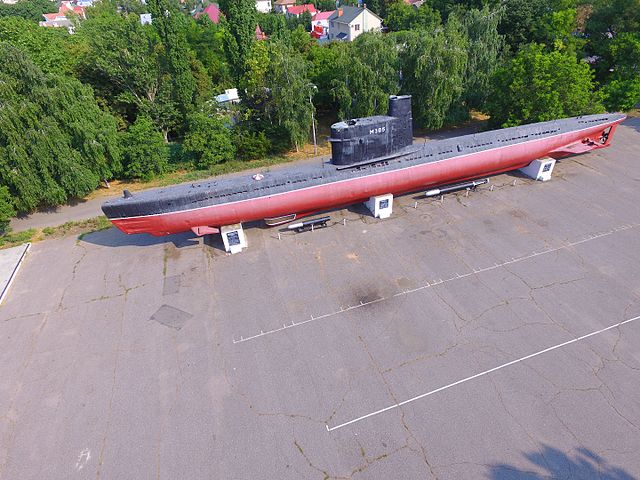
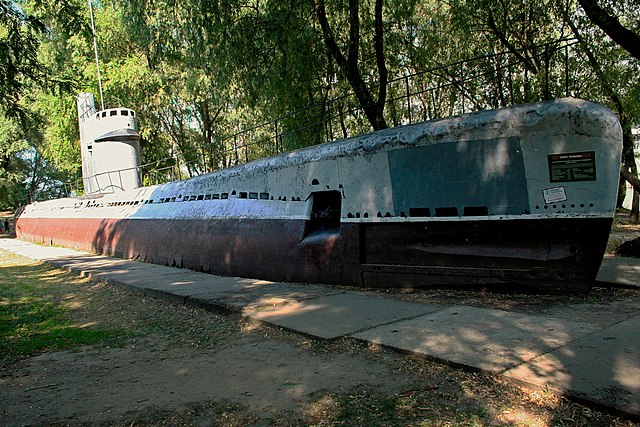
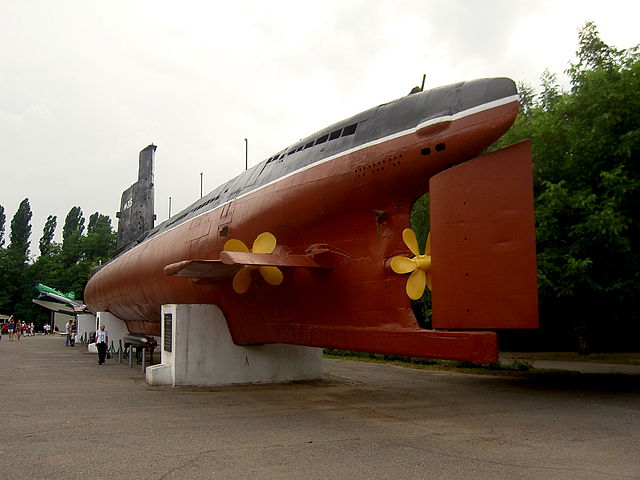
 Latest Facebook Entry -
Latest Facebook Entry -  X(Tweeter) Naval Encyclopedia's deck archive
X(Tweeter) Naval Encyclopedia's deck archive Instagram (@navalencyc)
Instagram (@navalencyc)





 French Navy
French Navy Royal Navy
Royal Navy Russian Navy
Russian Navy Armada Espanola
Armada Espanola Austrian Navy
Austrian Navy K.u.K. Kriegsmarine
K.u.K. Kriegsmarine Dansk Marine
Dansk Marine Nautiko Hellenon
Nautiko Hellenon Koninklije Marine 1870
Koninklije Marine 1870 Marinha do Brasil
Marinha do Brasil Osmanlı Donanması
Osmanlı Donanması Marina Do Peru
Marina Do Peru Marinha do Portugal
Marinha do Portugal Regia Marina 1870
Regia Marina 1870 Nihhon Kaigun 1870
Nihhon Kaigun 1870 Preußische Marine 1870
Preußische Marine 1870 Russkiy Flot 1870
Russkiy Flot 1870 Svenska marinen
Svenska marinen Søværnet
Søværnet Union Navy
Union Navy Confederate Navy
Confederate Navy Armada de Argentina
Armada de Argentina Imperial Chinese Navy
Imperial Chinese Navy Marinha do Portugal
Marinha do Portugal Mexico
Mexico Kaiserliche Marine
Kaiserliche Marine 1898 US Navy
1898 US Navy Sovietskiy Flot
Sovietskiy Flot Royal Canadian Navy
Royal Canadian Navy Royal Australian Navy
Royal Australian Navy RNZN Fleet
RNZN Fleet Chinese Navy 1937
Chinese Navy 1937 Kriegsmarine
Kriegsmarine Chilean Navy
Chilean Navy Danish Navy
Danish Navy Finnish Navy
Finnish Navy Hellenic Navy
Hellenic Navy Polish Navy
Polish Navy Romanian Navy
Romanian Navy Turkish Navy
Turkish Navy Royal Yugoslav Navy
Royal Yugoslav Navy Royal Thai Navy
Royal Thai Navy Minor Navies
Minor Navies Albania
Albania Austria
Austria Belgium
Belgium Columbia
Columbia Costa Rica
Costa Rica Cuba
Cuba Czechoslovakia
Czechoslovakia Dominican Republic
Dominican Republic Haiti
Haiti Hungary
Hungary Honduras
Honduras Estonia
Estonia Iceland
Iceland Eire
Eire Equador
Equador Iran
Iran Iraq
Iraq Latvia
Latvia Liberia
Liberia Lithuania
Lithuania Mandchukuo
Mandchukuo Morocco
Morocco Nicaragua
Nicaragua Persia
Persia San Salvador
San Salvador Sarawak
Sarawak Uruguay
Uruguay Venezuela
Venezuela Zanzibar
Zanzibar Warsaw Pact Navies
Warsaw Pact Navies Bulgaria
Bulgaria Hungary
Hungary

 Bundesmarine
Bundesmarine Dutch Navy
Dutch Navy Hellenic Navy
Hellenic Navy Marina Militare
Marina Militare Yugoslav Navy
Yugoslav Navy Chinese Navy
Chinese Navy Indian Navy
Indian Navy Indonesian Navy
Indonesian Navy JMSDF
JMSDF North Korean Navy
North Korean Navy Pakistani Navy
Pakistani Navy Philippines Navy
Philippines Navy ROKN
ROKN Rep. of Singapore Navy
Rep. of Singapore Navy Taiwanese Navy
Taiwanese Navy IDF Navy
IDF Navy Saudi Navy
Saudi Navy Royal New Zealand Navy
Royal New Zealand Navy Egyptian Navy
Egyptian Navy South African Navy
South African Navy






























 Ukrainian Navy
Ukrainian Navy dbodesign
dbodesign